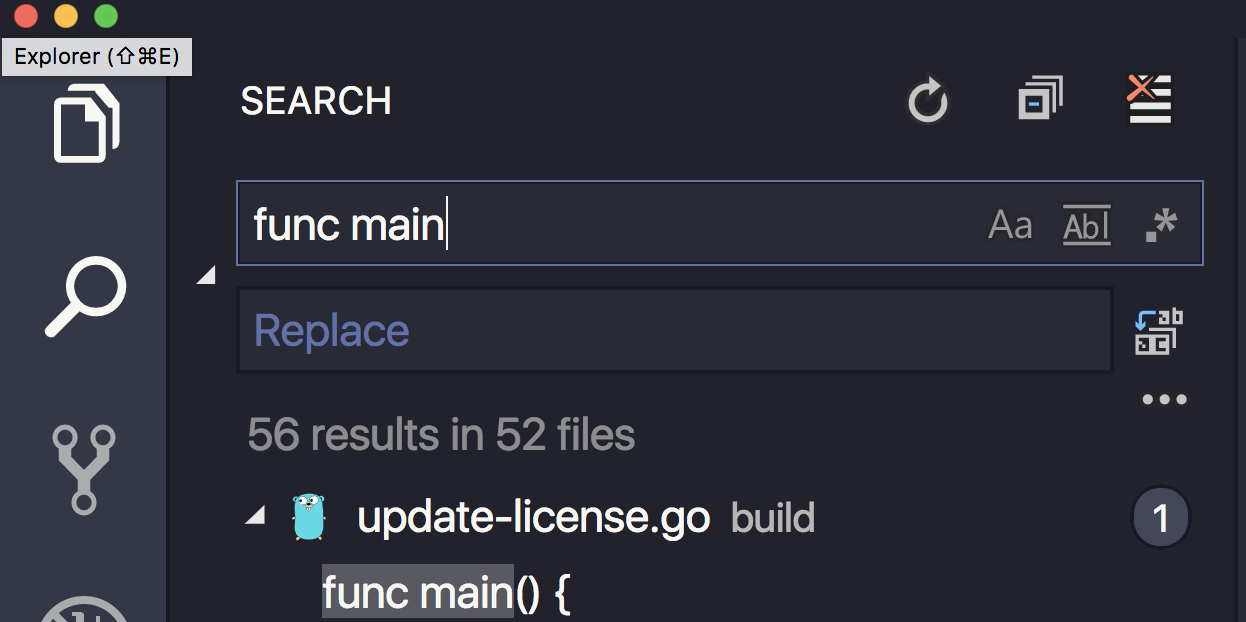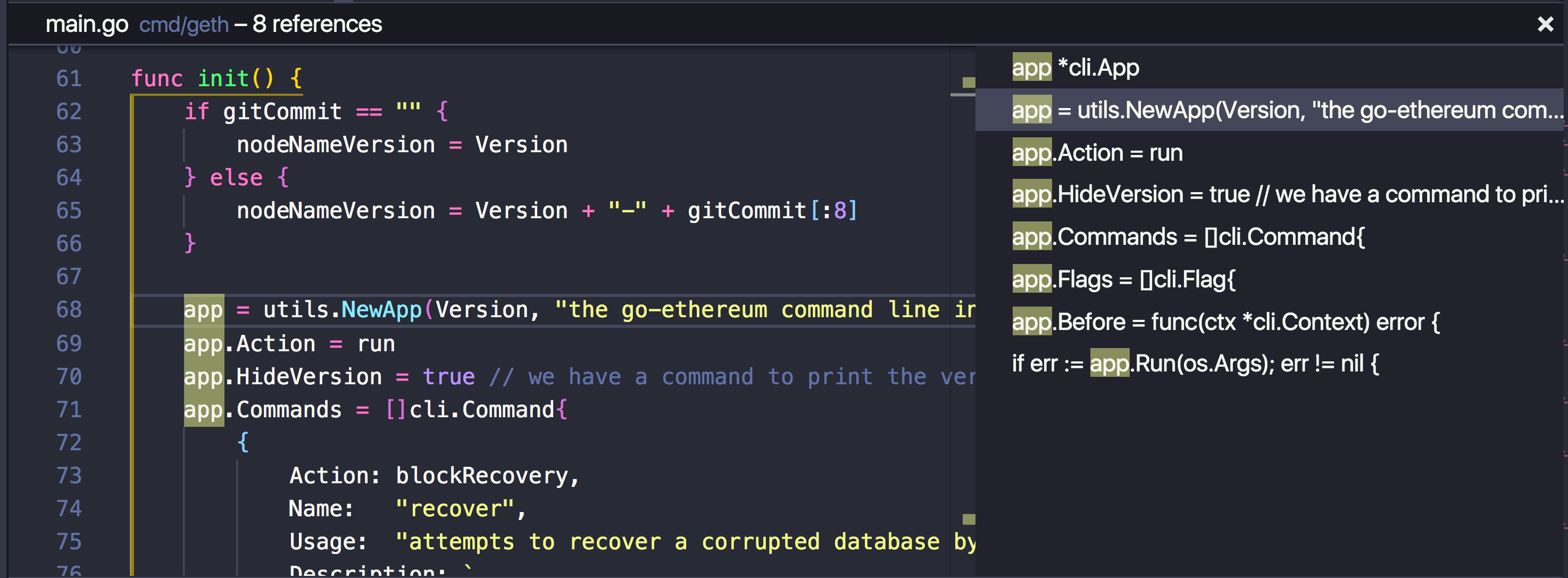Java developer's adventure to analyze go-ethereum (geth): Day 01
This is an one of series, "Java developer's adventure to analyze go-ethereum(geth)". I have a plan for this seires like the followings:
- (This article) Day 01: Getting
gethsource(1.0), prepare IDE(VS Code) and find the entry point - Day 02: Overall running structure of
gethwith CLI lib - Day 03: Analyze
gethnode's startup logic and how to debuggethwith VS Code. - TBD
Prerequisite
First of all, This series assumes that readers have been written a code in some programming language (, especially OOP language like Java) at least. This series also requires basic concepts of block chain and ethereum like account, mining, and etc.
Goal
In this article, I am going to cover basic environment to read and analyze geth source and first entry point of geth command. I also simply describe func and Package Intilization concept in golang.
What is geth?
Geth is a one of original implementations written in golang. Geth's internal truly follows ethereum protocol. Therefore, the analysis of geth would be suitable to understand ethereum protocol exactly. Then let's get started to go in the internals of geth.
Getting geth source
The first step to analyze geth is to fetch geth source code. There are two ways to download it. The one is to clone geth source using git. The another way is to download the source within golang development environment . For the first method, you can clone geth source like the following commands.
$ git clone https://github.com/ethereum/go-ethereum.git
If you have set up golang, you can easily download geth with this command.
$ go get -d github.com/ethereum/go-ethereum
You can reference more detailed information in installaiton manual about getting source and building it. If you build your geth source according to the above manula, you will get geth executable binary.
Go to Frontier
We sometimes need to go back to the initial version to analyze open source, because the first version is relatively simpler than the latest version to read the source. So I am going to go back to geth 1.0.0 Frontier. Frontier is a name of the version 1.0.0 of geth. It is already tagged with v1.0.0. You can change the original code to 1.0.0 code with git command.
$ git checkout v1.0.0
Tool Setting for code reading
To read geth source, We need an appropriate tool to support code reading written in golang. There are various IDEs and editors to support golang. In this series, I am going to use VS Code. If you want to install and set up VS Code for golang. Please follow this public guideline.
There are useful extensions for VS Code. I'm familiar with Intellij Key Binding, so installed JetBrains IDE Keymap. This would be helpful to move source code of geth back and forth.
First entry point: main
Every software's first entry point is a main function. Let's check golang's function declaration syntax to find main function in geth.
package main
import (
"fmt"
)
func main() {
fmt.Println("Hello, Golang and Geth")
}
Golang's function sytanx starts with func keyword and followed by function name. If you want to run the above code snippet. Run it within the playgorund provided in this url.
We can find the entry point in geth through what we have just learned. But there is a one problem. There is a lot of func main in geth source.

But, we've got already big hint to find the entry point for geth. That's the executable binary file name, geth. When we try to start geth client, we must use geth command. Finally, We found the main function in cmd/geth folder like the following screenshot.

Analysis of main function
The main function of gets is like:
func main() {
runtime.GOMAXPROCS(runtime.NumCPU())
defer logger.Flush()
if err := app.Run(os.Args); err != nil {
fmt.Fprintln(os.Stderr, err)
os.Exit(1)
}
}
The first two lines of code is related with runtime environment an logging. So We don't need to consider about them. The most important logic is to invoke app.Run(os.Args) in line 4. Consequently, We can figure out that there is only invoking app.Run() in main function of geth.
Our next questions would be like this:
- Where is the
appdeclared?- Where is the initialization logic for
appinstance?
We can quickly find the location of app's declaration with Go to Definition shortcut of VS Code. The app instance's declaration is in line 58. The following is declaration logic in main.go file.
var (
gitCommit string // set via linker flag
nodeNameVersion string
app *cli.App
)
We can also easily find initialization logic with Find All Reference shortcut. When you try to find all reference of app, VS Code will shows all reference like the following screenshot.

In the referense list, the second result is the initialization logic of app. It is in init function. This is head part of init function.
func init() {
if gitCommit == "" {
nodeNameVersion = Version
} else {
nodeNameVersion = Version + "-" + gitCommit[:8]
}
app = utils.NewApp(Version, "the go-ethereum command line interface")
app.Action = run
app.HideVersion = true // we have a command to print the version
app.Commands = []cli.Command{
...
/
We can read and understand that app is initialized from invoking utils.NewApp. Then, who is the caller of init function to initialize app instance. That's the role of golang.
Package Initialization
I found that there is a special initialization specification in golang. It is the Package Initialization. In golang , users can declare package level (or scope) variable and initializatio logic of it. The app's declaration and init function we've seen were just golang's syntax. Detailed spec about Package Initialization is in the following link.
Conclusion
Today, I describes code reading environment setup and the main entry point of geth . This is the starting point to analyze go ethereum protocol. geth has a app instance to be ran. The main point of app instance is that it is initialized with utils.NewApp()'s result. Next, we must catch up the utils.NewApp(). I will describe it in next time.
@woojin.joe 우와 영어로 쓰시는거에요? ^_^
Downvoting a post can decrease pending rewards and make it less visible. Common reasons:
Submit
@yudong 전부터 영어로 글 써봐야 겠다는 목표가 있어서 시도해 봤는데... 역시 쉽지 않네요 ㅎ
Downvoting a post can decrease pending rewards and make it less visible. Common reasons:
Submit
오오 굿굿^.^
Downvoting a post can decrease pending rewards and make it less visible. Common reasons:
Submit
Downvoting a post can decrease pending rewards and make it less visible. Common reasons:
Submit